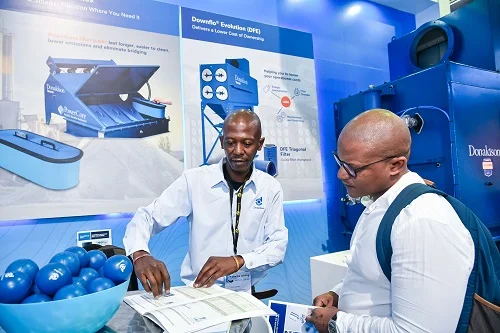
Live demonstrations will give visitors an opportunity to see products and machinery in action. (Image source: Specialised Exhibitions)
An exhibition viewed by industry as one of the most important events on the calendar, Electra Mining Africa will provide a unique platform where exhibitors can launch new products and showcase their latest innovations and technologies
Taking place at the Expo Centre in Nasrec, Johannesburg, from 2-6 September, visitors to Electra Mining Africa will have the opportunity to connect with more than 950 exhibitors and explore thousands of new products, ground-breaking machinery, latest innovations and world-class technologies at what will be the biggest show ever in its history. The many live demonstrations will give visitors an opportunity to see products and machinery in action during the five days of the exhibition.
“We knew it was going to be one of the biggest shows we’ve ever had, but we can now say that this year’s Electra Mining Africa is the biggest show in its history.” remarked Charlene Hefer, portfolio director at Specialised Exhibitions a division of Montgomery Group, the organisers of the show. “That means more top brands, products and innovations at this year’s show with a much bigger footprint of exhibition space. It’s very exciting to have reached this milestone.”
One of the largest trade exhibitions in southern Africa
Electra Mining Africa is the largest mining, electrical, automation, manufacturing, power and transport trade exhibition in southern Africa. Local manufacturing will play a prominent role at this year’s Electra Mining Africa, and, for the first time, the Local Southern African Manufacturing Expo will be incorporated within this year’s show.
“In addition to the exhibits, we are delighted to have some excellent speakers at our free-to-attend seminars who will be sharing their expertise on many topics mostly aligned with our theme days,” commented Hefer. “These include sustainability, skills, safety and innovation. Also taking place alongside the exhibition, the Southern African Institute of Mining and Metallurgy is hosting a Mine Planning and Design Colloquium, the Lifting Equipment Engineering Association of SA is hosting a conference, and WiMSA is hosting a half-day women in mining workshop.”
“Electra Mining Africa has built its reputation as a platform for trade; the place where buyers and sellers meet to do business,” says Gary Corin, managing director of Specialised Exhibitions. “It’s a massive trade event taking place over five days, contributing to the stimulation of trade in the industrial, manufacturing and mining sectors of the South African economy.”
For further information, visit www.electramining.co.za

























